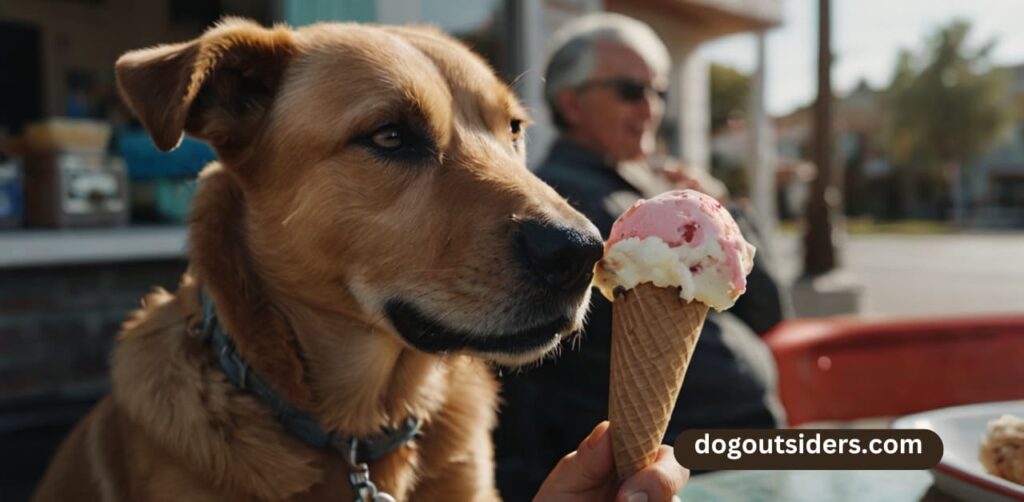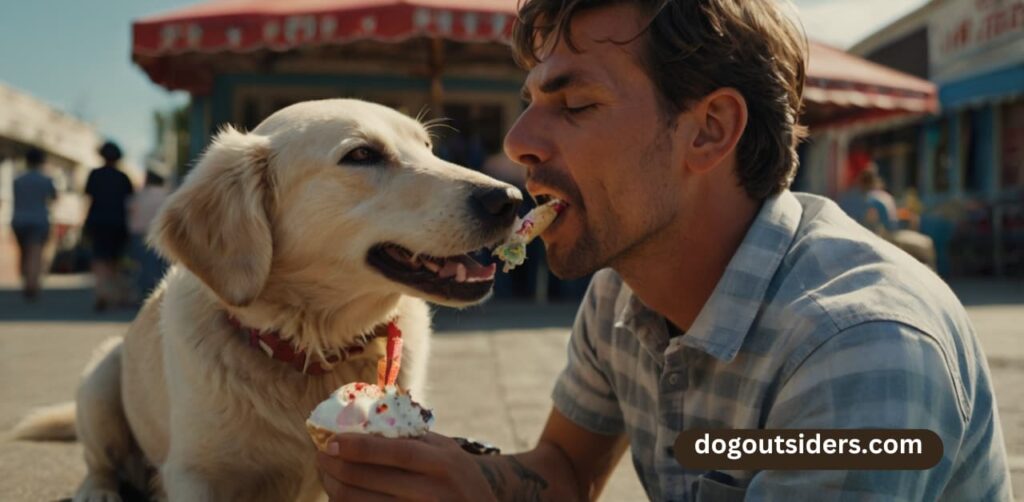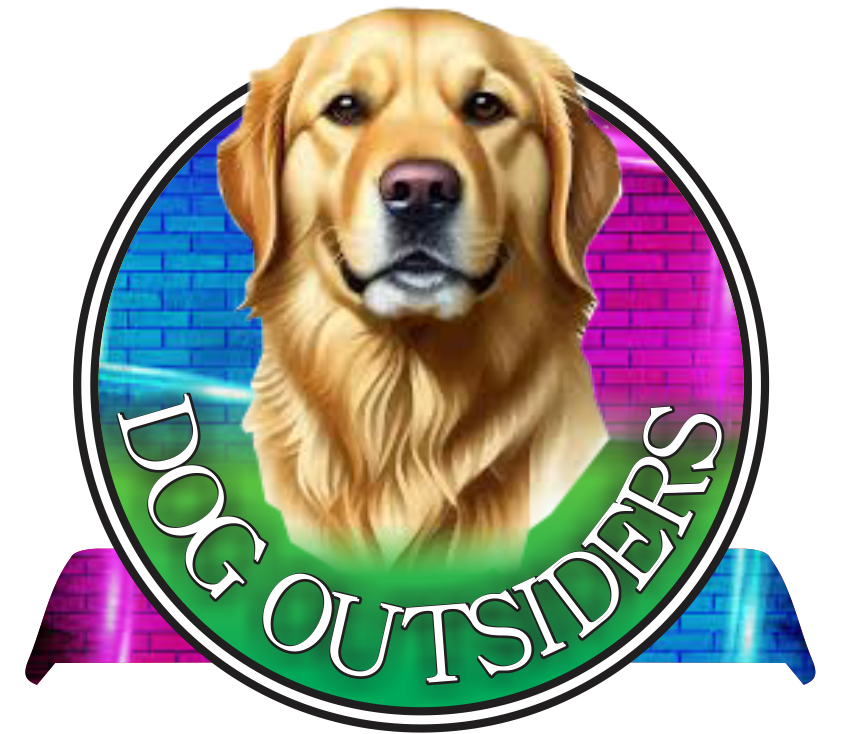I often wonder if my furry friend, a tasty dog, can join in on the fun when I indulge in ice cream and dog sugary foods. This sweet treat, including vegan ice cream and dog ice cream, has been a favorite for centuries, dating back to ancient China and later popularized in Europe. Dogs have shared our lives for thousands of years, and it’s natural to want to share our favorite snacks with them. However, not all human foods are safe for dogs. Can dogs eat ice cream? It’s a question that many pet owners ask. Understanding what ingredients, like dog chocolate bars, are safe is crucial for their health. In this post, I’ll explore the facts about dogs and ice cream, helping you make informed choices for your pup’s treats.
Key Takeaways
- Dogs should generally avoid ice cream due to potential health risks, including lactose intolerance and food allergies.
- Always check the ingredients of ice cream, as some flavors can be harmful or toxic to dogs, such as chocolate and xylitol.
- If you want to treat your dog, consider safe alternatives like dog-friendly frozen yogurt or homemade treats made specifically for canine consumption.
- Be aware of the signs of lactose intolerance in your dog, such as diarrhea or stomach upset, to prevent discomfort.
- Monitor your dog’s weight, as ice cream can contribute to obesity; opt for healthier snacks to maintain their overall well-being.
- If your dog accidentally consumes ice cream and shows unusual symptoms, contact your veterinarian for guidance.
Can Dogs Eat Ice Cream

General Consensus
Many pet owners wonder if their canine companions can safely enjoy ice cream or dog chocolate bars. The general consensus is mixed. Some dogs can tolerate small amounts of ice cream without issues. Others may face digestive problems due to lactose intolerance.
Ice cream contains dairy, which many dogs struggle to digest. According to the American Kennel Club, most adult dogs lose the enzyme needed to break down lactose. This can lead to upset stomachs or diarrhea after consuming ice cream.
I once gave my dog a small lick of vanilla ice cream. He seemed to love the dog chocolate bars, but I noticed he had a bit of an upset stomach later. This experience taught me to be cautious about what I feed him.
Potential Risks
Feeding dogs ice cream poses several risks. High sugar content in regular ice cream can lead to obesity and dental issues in dogs. Some flavors contain ingredients that are toxic to pets, such as chocolate or xylitol.
Xylitol is a common sweetener found in many sugar-free products. It is highly toxic to dogs and can cause severe health problems, including liver failure. Even small amounts can be dangerous.
Furthermore, the fat content in ice cream can contribute to pancreatitis in dogs. This condition is painful and requires immediate veterinary attention. Signs of pancreatitis include vomiting, lethargy, and abdominal pain.
Consulting a Vet
Before introducing any new food into your dog’s diet, consulting a vet is crucial. Vets can provide personalized advice based on your dog’s health and dietary needs. They may recommend specific doggy ice cream products designed for pets that are safe and nutritious.
As a responsible pet owner, I always check with my vet before trying new treats for my dog. This ensures that I am making safe choices for his health and well-being.
I have discovered some brands that offer pup ice cream made specifically for dogs. These products use dog-friendly ingredients and come in flavors like peanut butter or pumpkin. They allow my dog to enjoy a frozen treat without the risks associated with traditional ice cream.
Why Dogs Should Avoid It

Digestive Issues
Dogs have a different digestive system than humans. Their bodies are not designed to process dairy products effectively. Many dogs suffer from lactose intolerance. This means they cannot digest lactose, the sugar found in milk and ice cream.
Symptoms of lactose intolerance can include gas, diarrhea, and stomach cramps. I’ve seen my own dog experience these issues after sneaking a bit of ice cream. It was clear that dairy does not sit well with him.
Allergies
Some dogs can develop allergies to dairy products, leading to issues such as skin irritations or digestive problems. Pet owners frequently miss these symptoms, mistakenly believing their dog is merely finicky or has a delicate stomach.
It’s essential to monitor your dog’s reactions to new foods. If you notice any unusual behavior, consult a veterinarian. Keeping track of what your dog eats can help prevent serious health issues.
Long-term Health Risks
Feeding dogs ice cream poses long-term health risks. Regular consumption can lead to obesity due to high sugar and fat content. Obesity increases the risk of diabetes and joint problems in dogs.
I learned this lesson when my friend’s dog became overweight after indulging in too many treats. The vet recommended a strict diet to manage his weight. It took time, but the dog eventually returned to a healthier state.
Chocolate Toxicity
Certain ice creams may contain chocolate, a substance that poses significant risks to dogs. Even minimal consumption can result in serious health complications. Signs of chocolate poisoning in dogs can manifest as vomiting, elevated heart rate, and seizures.
Knowing the ingredients in treats is crucial for dog owners. Always read labels carefully before sharing human food with pets. I always check for harmful ingredients before giving my dog any snacks.
Understanding Lactose Intolerance
Definition
Lactose intolerance occurs when dogs cannot properly digest lactose. This sugar is found in milk and dairy products. Many adult dogs lose the ability to produce lactase, the enzyme needed to break down lactose. Studies show that approximately 50% of adult dogs experience some level of lactose intolerance.
I learned this after my dog had a reaction to some ice cream I gave him. I thought he would enjoy it, but it turns out that many dogs can’t handle dairy well.
Symptoms
Symptoms of lactose intolerance in dogs include diarrhea, gas, and stomach cramps. These signs typically appear within a few hours after consuming dairy. Some dogs may also exhibit vomiting or excessive drooling. Observing these symptoms can help determine if a dog has trouble with lactose.
My friend’s dog once had a bad reaction after sneaking some cheese. It was clear that he felt uncomfortable afterward. Watching for these signs is crucial for any dog owner who might consider giving their pet dairy products.
Puppies vs Adult Dogs
Puppies are often more tolerant of lactose than adult dogs. They produce higher levels of lactase while nursing from their mothers. As they grow and transition to solid food, their lactase production decreases. By six months, many puppies start to develop lactose intolerance.
For this reason, introducing dairy too early can lead to problems later on. My own puppy thrived on her mother’s milk but struggled with yogurt when I tried to introduce it later. Understanding this difference helps prevent unnecessary discomfort for our pets.
Recognizing Food Allergies

Common Allergens
Dairy products often trigger food allergies in dogs. Many dogs are lactose intolerant and can’t digest dairy well. Other common allergens include wheat, soy, and certain meats like beef or chicken.
I’ve noticed that some of my friends’ dogs react poorly to specific foods. They switched to limited ingredient diets and saw improvements in their pets’ health.
Signs to Observe
Pet owners should watch for signs of allergies. Symptoms include itching, skin irritations, and digestive problems. Vomiting and diarrhea are also common indicators.
I once had a dog that developed a rash after eating a new treat. It was alarming to see the discomfort, prompting me to research food options more carefully.
Importance of Elimination
Eliminating potential allergens from a dog’s diet is crucial. A process called an elimination diet helps identify specific triggers. This involves feeding the dog a simple diet for several weeks. Gradually reintroducing one food at a time can pinpoint the culprit.
Many pet owners find success with this method. I remember when I tried it with my dog; it revealed that he couldn’t tolerate chicken. This knowledge allowed me to choose safer food options for him.
Obesity and Ice Cream
Sugar Content
Ice cream contains high levels of sugar. High sugar content leads to weight gain in dogs. Regular consumption can contribute to obesity. Dogs do not metabolize sugar like humans. This difference can cause health issues over time.
I have seen this firsthand with my own pet. A small amount of ice cream as a treat can quickly add up. I always check the ingredients for hidden sugars before giving my dog any frozen treats.
Health Conditions
Obesity in dogs can lead to severe health conditions. Joint problems are common among overweight dogs. Extra weight puts stress on their joints, causing pain and mobility issues. Conditions like arthritis can develop from prolonged weight gain.
Veterinarians often warn about these risks. They recommend regular check-ups to monitor a dog’s weight. Keeping an eye on their diet is crucial for long-term health.
Calorie Intake
Pet owners must monitor their dog’s calorie intake carefully. Ice cream is often high in calories, contributing to excess weight. Even friendly ice creams labeled as dog-safe can be calorie-dense.
I track my dog’s daily food and treat intake using a simple app. This helps me ensure he stays within a healthy range. Balancing treats with regular meals is essential.
Alternative Treats
Many alternatives exist for dog-friendly frozen treats. Vegan ice cream or frozen yogurt can be lower in fat and sugar. These options provide a healthier way to cool down during hot days.
Plain vanilla ice cream may seem harmless but should still be given sparingly. Fruit ice creams made without added sugars are also good choices. Always read labels for ingredients that could harm your pet.
Dangerous Ice Cream Flavors
Chocolate Hazards
Chocolate is highly toxic to dogs. It contains theobromine, which can cause severe health issues. Symptoms include vomiting, diarrhea, and even seizures. Dark chocolate poses a higher risk than milk chocolate. I always keep chocolate away from my dog during gatherings. It’s essential to be aware that even small amounts can be dangerous.
Caffeine Concerns
Caffeine is another flavor to avoid. Like chocolate, it affects dogs negatively. Caffeine can lead to restlessness, rapid breathing, and increased heart rate. Some ice creams may contain coffee or espresso flavors. I once saw a friend give their dog a coffee-flavored treat without knowing the risks. It’s crucial to check for any caffeine content in ice cream before offering it.
Xylitol Warnings
Xylitol is an artificial sweetener found in many products, including some ice creams. It is extremely toxic to dogs. Even small amounts can lead to liver failure and hypoglycemia. Symptoms can appear rapidly, often within 30 minutes of ingestion. I learned about xylitol’s dangers after reading about cases where dogs suffered serious health issues after eating sugar-free treats.
Fruit Flavors
Certain fruit flavors can also pose risks. Grapes and raisins are toxic to dogs and can cause kidney failure. Ice creams flavored with these fruits should be off-limits. Even though some fruit flavors appear safe, it’s best to err on the side of caution.
Ingredient Labels
Always read ingredient labels carefully before sharing human food with dogs. Many ice creams contain harmful additives that can be dangerous for pets. Ingredients like macadamia nuts and certain preservatives can lead to health problems. I make it a habit to check labels thoroughly, ensuring my dog’s safety first.
Friendly Alternatives
Consider offering friendly ice cream alternatives instead of traditional vanilla ice cream or other human flavors. Frozen yogurt designed specifically for dogs is available at many pet stores. These options are usually made with safe ingredients that won’t harm your furry friend.
Safe Alternatives for Dogs
Frozen Yogurt
Frozen yogurt serves as a great alternative for dogs. It typically contains lower lactose levels than traditional ice cream. Many dogs are lactose intolerant, which can lead to digestive issues. I often choose frozen yogurt for my dog during hot days.
Make sure to select plain, unsweetened frozen yogurt. Avoid any flavors that contain harmful ingredients like chocolate or artificial sweeteners. Always check the label before serving. This treat can be a tasty way for your dog to cool off.
Nice Cream
“Nice cream” is another healthy dessert option. This treat consists of blended fruits, such as bananas and strawberries. It’s simple to make at home and offers a nutritious snack for dogs. I enjoy preparing nice cream when I have ripe bananas on hand.
Blend the fruits until smooth and freeze them in small portions. This allows you to control the ingredients without added sugars or preservatives. Fruits like blueberries and apples are also safe choices for dogs. They provide vitamins and antioxidants, promoting overall health.
Commercial Treats
Commercially available frozen treats cater specifically to dogs. These products are designed with dog-friendly ingredients and avoid harmful additives. Brands offer various flavors, ensuring your dog enjoys their special treat safely.
Check for options made from natural ingredients without artificial flavoring or sweeteners. These treats can be found at pet stores or online retailers. I’ve tried several brands, and my dog always gets excited when I bring them home.
Homemade Treats
Homemade treats allow you to customize flavors based on what your dog loves. You can use ingredients like peanut butter, pumpkin, or yogurt combined with fruits for a delicious snack. These treats are not only fun to make but also ensure quality control over what your dog eats.
Consider freezing these homemade mixtures in ice cube trays for easy serving. This way, you can give your dog a refreshing snack anytime without worrying about harmful ingredients.
Responding to Accidental Consumption
Immediate Steps
If a dog accidentally eats ice cream, take immediate action. First, assess the amount consumed. A small lick may not cause issues, but larger quantities can lead to problems. If I see my dog devour a whole cup, I know to act quickly.
Next, contact your veterinarian for advice. They can guide you based on the dog’s size and health status. Vomiting may occur as a natural reaction. This can be due to lactose intolerance or other ingredients in the ice cream.
Monitor Reactions
After consumption, closely monitor the dog for any adverse reactions. Look for signs of distress such as excessive drooling, whining, or lethargy. My experience shows that dogs can react differently based on their individual health conditions. Some may show no symptoms, while others might feel unwell.
If vomiting occurs, note the frequency and appearance. If it continues for more than a few hours, seek veterinary help. Other symptoms to watch for include diarrhea or unusual behavior. These could indicate a need for medical attention.
Hydration and Calmness
Keep the dog hydrated after they consume ice cream. Ensure fresh water is available at all times. Hydration helps flush out any unwanted substances from their system. I often find that offering my dog water encourages them to drink more.
Keeping the dog calm is also essential during this time. Stress can worsen any potential health issues. Create a comfortable environment with familiar toys or blankets. This can help soothe their nerves while waiting for further assessment.
I always make sure my dogs have a safe space where they can relax after an unexpected incident like this. It gives me peace of mind knowing they are comfortable.
Signs to Watch For
Gastrointestinal Distress
Dogs may show signs of gastrointestinal distress after consuming ice cream. Symptoms include diarrhea, vomiting, and bloating. These issues often arise due to lactose intolerance in many adult dogs. They lack the enzyme lactase needed to digest dairy products properly.
I once noticed my dog had an upset stomach after trying ice cream for the first time. It was alarming to see him uncomfortable, and I quickly learned to be cautious with such treats.
Other symptoms can include lethargy and loss of appetite. If you observe these signs, it’s essential to monitor your pet closely. Immediate veterinary attention may be necessary if symptoms persist.
Behavioral Changes
Behavioral changes can also indicate a problem. Dogs in discomfort may become more withdrawn or irritable. They might avoid playtime or their favorite activities. This change can signal that something is wrong.
I’ve seen my dog act differently when he feels unwell. His usual excitement turns into a desire to rest quietly in his bed. Recognizing these changes helps me determine when to seek help.
If your dog seems restless or excessively panting, this could be another warning sign. Look for any unusual whining or pacing behavior as well. These actions can indicate that they are experiencing discomfort or pain.
Eating Habits
Keeping a close eye on your dog’s eating habits is crucial. A sudden change in appetite can point to underlying issues. If your dog refuses food after consuming ice cream, it may indicate distress.
I always track my dog’s feeding patterns closely, especially after introducing new treats. Understanding what is normal for him helps me identify any problems quickly.
Dogs can form negative associations with specific foods after having an unpleasant encounter. If these aversions are not tackled promptly, they may result in persistent eating problems down the line.
When to Contact a Vet
Severe Reactions
Seeking veterinary advice is crucial if your dog shows severe reactions after eating ice cream. Symptoms like vomiting, diarrhea, or difficulty breathing can indicate an allergy or intolerance. I remember a time when my friend’s dog had a severe reaction after consuming dairy. They rushed him to the vet, and it turned out he was lactose intolerant.
Immediate action can prevent further complications. If you notice any alarming signs, don’t hesitate to contact your veterinarian. They can provide guidance tailored to your dog’s specific needs.
Unusual Symptoms
If your dog develops unusual symptoms after consuming ice cream, contacting a vet is essential. Some dogs may experience mild reactions that can escalate quickly. For example, excessive scratching or lethargy might seem minor but could point to a serious issue.
I once had a dog that developed a rash after trying ice cream for the first time. It was unsettling to see him uncomfortable. The vet explained that certain ingredients in ice cream could trigger skin reactions in sensitive dogs. Persistent symptoms warrant professional evaluation.
Dietary Issues
Managing dietary issues in dogs requires expert guidance. Ice cream isn’t a standard part of a dog’s diet and can lead to complications. Consulting with a veterinarian helps determine what treats are safe for your pet. They can offer alternatives that satisfy both you and your dog without risking health.
I often consult my vet when introducing new foods to my dog’s diet. Their insights help me make informed choices and avoid potential issues.
Monitoring Health
Regular monitoring of your dog’s health is vital after they consume new foods like ice cream. Keep an eye on their behavior and physical condition for at least 24 hours post-consumption. Any changes should be documented and reported to your vet.
For instance, if your dog becomes less active or shows signs of discomfort, these changes are worth noting. Providing this information can assist the vet in diagnosing any problems effectively.
Closing Thoughts
I’ve explored the ins and outs of dogs and ice cream. While it might be tempting to share a scoop, the risks often outweigh the fun. Lactose intolerance, food allergies, and potential obesity are serious concerns. Plus, some flavors can be downright dangerous.
Instead of risking your furry friend’s health, consider safe alternatives that satisfy their taste buds without the downsides. Always keep an eye on their reactions to new treats. If you suspect any issues, don’t hesitate to consult your vet. Let’s prioritize our pets’ well-being and make informed choices together. Share this info with fellow dog lovers to spread awareness!
Frequently Asked Questions
No, dogs should not eat ice cream. It can cause digestive issues and other health problems due to lactose and sugar content.
If a dog consumes ice cream, it may experience diarrhea, vomiting, or stomach discomfort. Monitor your pet for any adverse reactions.
Yes, most ice creams contain ingredients harmful to dogs, such as chocolate, xylitol, and high sugar levels. Always check labels carefully.
Signs include gas, bloating, diarrhea, and stomach cramps after consuming dairy products. If you notice these symptoms, avoid giving your dog dairy.
Yes! Look for dog-friendly frozen treats made with yogurt or peanut butter specifically designed for canine consumption. Always check ingredient lists.







One Comment